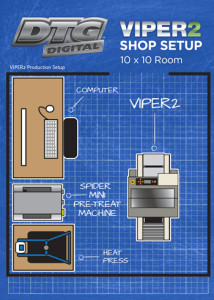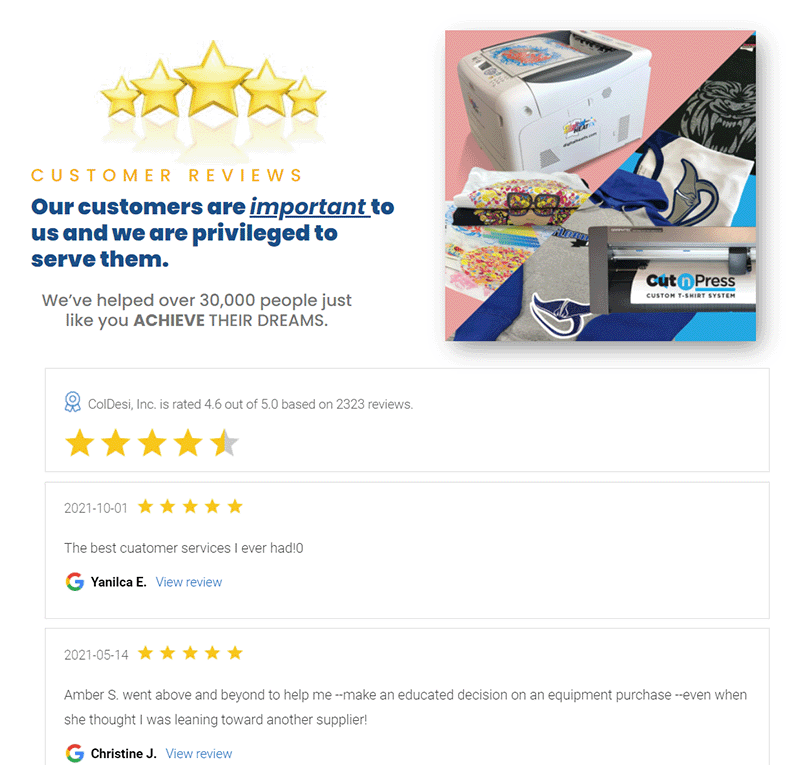How to Set Up a T-Shirt Shop on a Shoestring Budget

Starting your own custom products shop can seem like a daunting task, especially when you don’t have a lot of money to spend. But don’t worry, we’re here to help! In this blog post, we will discuss the steps that you need to take to set up your shop on a shoestring budget. We’ll go over everything from choosing the right software to designing your logo and marketing your business. So read on for all the information you need to get started!
Finding and Using the Best Quality Equipment Saves Money
Custom products are all around us, from the clothes we wear to the furniture in our homes. When it comes to custom products, quality should be a top priority. After all, these items are often made to order and can be costly. But that doesn’t mean that providing great quality has to cost you an arm and a leg.
So how can you ensure that you’re getting the best quality custom product equipment? One way is to do your research. The more you know about a product, the better equipped you’ll be to make a wise buying decision.
Read reviews and compare prices before making a purchase. Another way is to choose a reputable brand or manufacturer. A good reputation is often a sign of quality craftsmanship. Finally, don’t be afraid to ask questions.
Anyone who has ever shopped online knows that reviews can be extremely helpful in choosing a product. But with so many different opinions out there, it can be difficult to know which reviews to trust. Here are a few tips to help you read reviews and judge which ones are most useful.
Listen to People Who are In the Industry – Read the Reputation
First, take a look at the overall rating. Generally speaking, the higher the rating, the more reliable the review. However, keep in mind that a low rating doesn’t necessarily mean that the product is bad. It could just mean that the reviewer had unrealistic expectations.
Next, pay attention to how many people have reviewed the product. A five-star rating from one person isn’t as helpful as a four-star rating from hundreds of people. The more reviews there are, the more accurate they tend to be.
Finally, read the reviews carefully and look for red flags. If a review seems too good to be true, or if it’s full of typos and grammatical errors, it’s probably not worth taking seriously. By following these tips, you’ll be able to sort through the clutter and find the most helpful reviews.
If you’re looking at a product on the internet, for example, you’ll want to make sure you’re reading reviews from verified purchasers. These are people who have actually bought and used the product, so their opinion is likely to be more accurate than someone who’s just writing a generic review.
With the internet, it’s never been easier to find reviews for pretty much anything you’re looking to buy. But with so many options out there, it can be tough to know which ones to trust.
Consider the reviewer’s tone. Are they endorsing the product enthusiastically, or are they warning you away from it? If a reviewer seems overly negative or positive, that’s usually a sign that their review isn’t terribly reliable.
By following these simple tips, you can quickly sift through all the noise and find reviews that are actually helpful in making your equipment decision.
Decide on the products you want to sell
Selling products can be a great way to make some extra money, but it’s important to choose the right products to sell.
There are a few things you should keep in mind when making your decision. First, consider what kinds of products you’re interested in selling. Do you have a passion for fashion? Are you a tech junkie? Or do you simply love finding bargains?
Once you’ve decided on a general category, start doing some research to find specific products that would be good to sell. Look for items that are popular but not too common, so you can offer your customers something unique.
Also, be sure to price your products competitively. If you’re selling items that are in high demand, you’ll want to make sure you’re getting a good return on your investment. With a little bit of thought and research, you can choose the perfect products to sell and start making some serious profits.
Deciding which products to sell can be a tricky business. On the one hand, you want to choose items that are popular and in demand, but on the other hand, you don’t want to get stuck with products that are difficult to sell. Here are a few things to keep in mind when making your selection:
- First and foremost, make sure that you are passionate about the products you choose. It will be much easier to sell something that you believe in yourself.
- Second, do your research. Find out what is selling well in your industry and try to select products that fit that trend.
- Third, don’t be afraid to experiment. Sometimes the best way to find out what works is to try a few different things and see how they fare.
- Finally, trust your gut. If something feels like it will be a good fit for your store, chances are it probably will be. Follow your instincts and you’ll likely end up making the right decision.
Set up your shop’s branding and design
Your shop’s branding is what sets you apart from the competition and attracts customers. Keep your branding consistent across all of your marketing materials, including your website, business cards, and social media accounts.
Use a professional logo and fonts that reflect your shop’s personality. If you’re not sure where to start, there are plenty of resources online to help you with branding and design. Just remember to keep it simple and focus on creating a cohesive look that represents your shop in the best light possible.  With a little effort, you can ensure that your shop’s branding is on point and helps you attract new customers.
With a little effort, you can ensure that your shop’s branding is on point and helps you attract new customers.
Keep in mind that your branding should be consistent across all of your marketing materials, from your website and social media accounts to your business cards and packaging.
When it comes to your retail shop’s design, simplicity is key. Your goal should be to create a clean, organized space that is easy for customers to navigate. Keep your shelves clutter-free and make sure that there is a clear path to the checkout counter. By taking some time to plan out your branding and design, you can create a cohesive look that will help to attract customers and boost sales.
Source your products and create your inventory
Now that you’ve decided to open up a t-shirt shop, it’s time to start sourcing the products you want to sell.
The first step is to determine what type of t-shirts you want to sell. Are you going to focus on a certain style, such as vintage or graphic tees? Or are you going to sell t-shirts for a specific demographic, such as children or adults?
Once you’ve decided on the type of t-shirts you want to sell, you can start sourcing them from wholesalers or manufacturers. You can also consider buying t-shirts in bulk from retailers. Another option is to manufacture your own t-shirts. This can be a more expensive option, but it gives you complete control over the design and quality of your product.
Once you’ve sourced the products you want to sell, it’s time to start building your inventory. You’ll need to decide how many t-shirts you want to keep in stock, and how often you’ll need to restock your inventory. You’ll also need to develop a pricing strategy for your t-shirts. There are a number of factors to consider when pricing your t-shirts, such as the cost of the shirt, the design, and the demand
This can be done by placing orders with your chosen supplier (or suppliers). Depending on your budget, you may want to start with a small inventory and gradually expand as your business grows. By taking the time to carefully consider these two factors, you’ll be well on your way to setting up a successful t-shirt shop.
Market your shop to attract customers
You’ve finally done it – you’ve opened up your own shop! But now that the doors are open, how do you make sure that customers come in?
Marketing is key to driving business to your door, and there are a few easy things you can do to get started. First, make use of social media – create a profile for your business on all the major platforms and start sharing content that will interest your target audience.
You can also try traditional advertising methods like putting up flyers in local businesses or taking out an ad in the newspaper. And, of course, word-of-mouth is always a powerful marketing tool – encourage your satisfied customers to tell their friends and family about your store. By following these simple tips, you can start attracting new customers and growing your business.
Who are you trying to attract? Once you know who your target customer is, you can tailor your marketing efforts to appeal to them. It’s also important to create a strong brand for your shop.
This includes everything from your logo and color scheme to the way you communicate with your customers. And finally, you need to make sure that your shop is easy to find. Create a website and make sure that your listing is up-to-date on all of the major directories. By following these simple tips, you’ll be well on your way to attracting new customers to your shop.
Starting a custom t-shirt shop can be an extremely profitable business venture, but it’s important to do your research and take the time to set up your shop in the most efficient way possible. By finding quality equipment, listening to those who are already in the industry, deciding on the products you want to sell, setting up your branding and design, sourcing your products, and creating your inventory wisely, you too can be successful in this exciting field.
custom products business custom t-shirt printing direct to garment printing starting a t-shirt shop t-shirt printing

